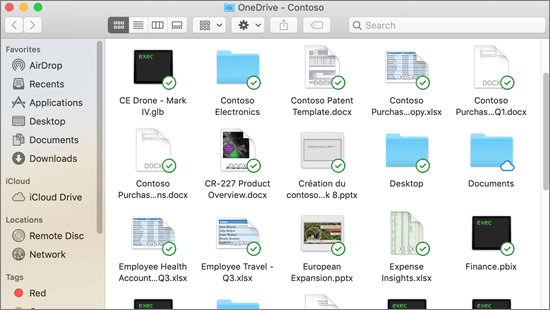We would like to show you a description here but the site won’t allow us. Browse code samples. Get started with Microsoft developer tools and technologies. Explore our samples and discover the things you can build.

| Developer(s) | Microsoft |
|---|---|
| Initial release | June 15, 2010; 10 years ago[1] |
| Stable release | 14.0.7265.5000 / February 9, 2021; 39 days ago[2] |
| Operating system | Windows XP SP3 and later Windows Server 2003 SP2 and later[3][4] |
| Platform | IA-32 and x64 |
| Predecessor | Microsoft Office 2007 |
| Successor | Microsoft OneDrive |
| Available in | Multilanguage[which?] |
| Type | Collaborative software |
| License | Trialware |
| Website | office.com/sharepoint-workspace/ |

Microsoft SharePoint Workspace (formerly Microsoft Office Groove[5]) is a discontinued desktop application designed for document collaboration in teams with members who are regularly off-line or who do not share the same network security clearance. It is no longer included with Microsoft Office 2013. It has been replaced by a web-based service called OneDrive for Business.
Groove's uses have included coordination between emergency relief agencies[6] where different organizations do not share a common security infrastructure and where offline access is important, and amongst teams of knowledge workers, such as consultants who need to work securely on client sites.It is also used as a staging system for documents in development, where content can be developed then transferred to a portal when complete.
Groove was initially developed by Lotus Notes creator Ray Ozzie, and developed by Groove Networks of Beverly, Massachusetts, until Microsoft's acquisition of Groove Networks in March 2005.[7]
Collaboration tools[edit]
Groove's basic set of services (including always-on security, persistent chat, store-and-forward messaging delivery, firewall/NAT transparency, ad-hoc group formation, and change notification) may be customized with tools.
Tools are mini-applications that rely on Groove's underlying functionality to disseminate and synchronize their contents with other members' copies of the workspace. Groove provides various tools that can be added to (and removed from) a workspace to customize the functionality of each space (for example a calendar, discussion, file sharing, an outliner, pictures, notepad, sketchpad, web browser, etc.).Tools that members use in a workspace often drive the nature of the person-to-person collaboration that ensues. In Groove 2007, the SharePoint Files tools can be used to take SharePoint 2007document libraries offline.
Groove 2007 includes a presence subsystem, which keeps track of which users in the contact store are online, and presents the information in the launchbar. If Groove server is used, a user is considered online when they log on to the server. In absence of a server the Device Presence Protocol (which comes in different variants for LANs and WANs) is used. Groove also allows sending instant messages to peers. All session and user information is stored by the Groove client at client side.[8]
Versions[edit]
Groove Virtual Office 3.1 was the last version before Microsoft's acquisition of Groove Networks. The following versions have been released since:
- Groove 2007 (Included in Office 2007 Ultimate and Enterprise editions and also available as a separate product), released January 27, 2007.[9]
- SharePoint Workspace 2010, released July 15, 2010.[10]
Microsoft claims the name change is a natural progression since Groove is to SharePoint what Outlook is to Exchange. Microsoft asserts that features have been added to make it easier to deploy and manage, and claims that SharePoint Workspace will make it easier to access SharePoint content (or content from any server that implements the publicly documented protocols).[11]
Server application[edit]
Microsoft Groove Server is a tool for centrally managing all deployments of Microsoft SharePoint Workspace in an enterprise. It enables using Active Directory for Groove user accounts, and create Groove Domains, with individual policy settings.[12][13]
See also[edit]
References[edit]
Sharepoint Download Mac
- ^Kolakowski, Nicholas (April 19, 2010). 'Microsoft Office 2010 Released to Manufacturing'. eWeek. QuinStreet. Retrieved April 22, 2016.
- ^'Office 2010 Build Numbers'. Support. Microsoft. Retrieved August 30, 2020.
- ^'System requirements for Office 2010'. TechNet. Microsoft. Retrieved April 22, 2016.
- ^'Which versions of Office work with Windows 10?'. Office Support. Microsoft. Retrieved 27 July 2017.
- ^Shaff, Reed (13 May 2009). 'Confirm or Deny'. Microsoft Office 2010 Engineering. Microsoft. Retrieved 16 June 2013.
- ^Morello, John (October 2006). 'Building an Emergency Operations Center on Groove and SharePoint'. TechNet Magazine. Microsoft. Retrieved 16 June 2013.
- ^'Microsoft, Groove Networks to Combine Forces to Create Anytime, Anywhere Collaboration'. News Center. Microsoft. 10 March 2005. Retrieved 16 June 2013.
- ^Chou, Yung (October 2006). 'Get into the Groove: Solutions for Secure and Dynamic Collaboration'. TechNet Magazine. Microsoft. Retrieved 16 June 2013.
- ^'Microsoft Product Lifecycle: Groove 2007'. Support. Microsoft. Retrieved 16 June 2013.
- ^'Microsoft Sharepoint Workspace 2010 Life-cycle Information'. Retrieved 15 October 2011.
- ^Protalinski, Emil (15 May 2009). 'Office 2010: Groove renamed to SharePoint Workspace'. Ars Technica. Condé Nast. Retrieved 15 June 2013.
- ^'Groove Server 2010'. TechNet Library. Microsoft. 12 May 2010. Retrieved 16 June 2013.
- ^'Groove Server 2010 features and benefits'. Microsoft Office website. Microsoft. Archived from the original on 27 July 2013. Retrieved 16 June 2013.
Further reading[edit]
- Barbin, Fabrice (April 2007). 'Microsoft Office Groove 2007 / SharePoint Workspace 2010 and Microsoft Office SharePoint: The importance of common implementation'. Hommes & Process. Archived from the original(PDF) on 2009-08-26.
Sharepoint Designer Download Mac
External links[edit]
Download Sharepoint For Mac
